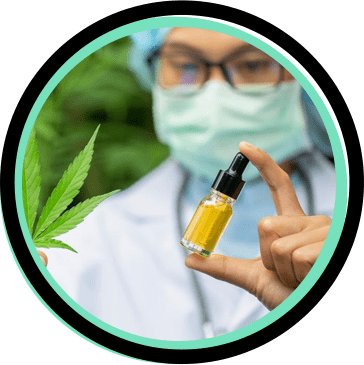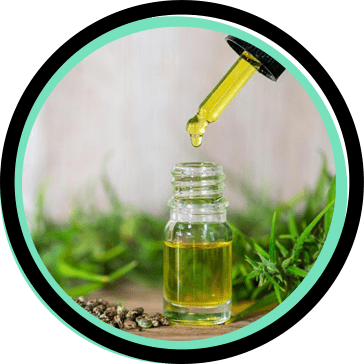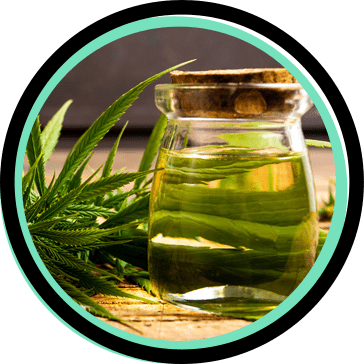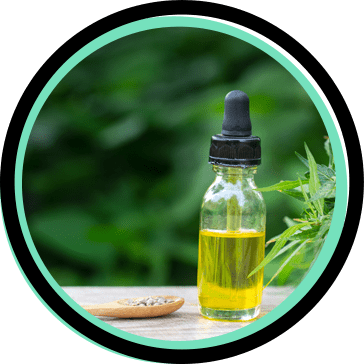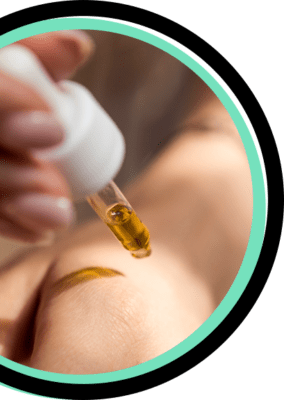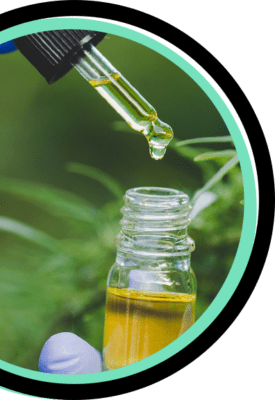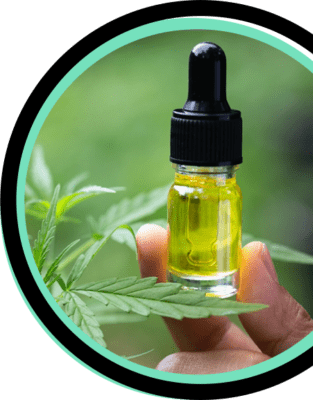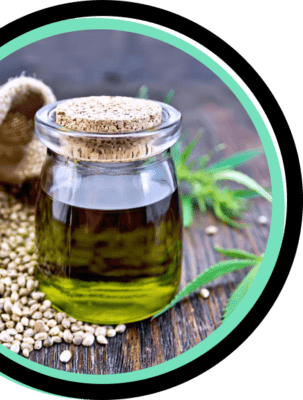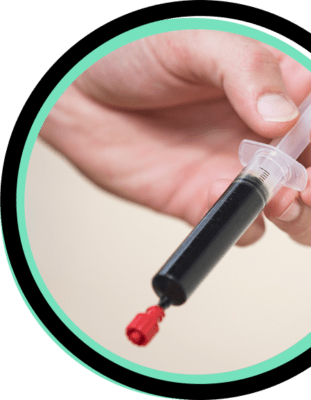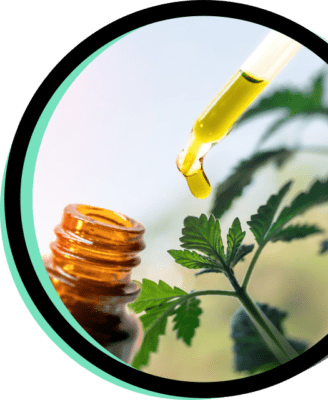
What is Cannabis Oil?
A Guide to THC Oil
What Is Cannabis Oil?
Before anything else, let’s understand what cannabis oil is exactly. Just like the name suggests, this oil is extracted from the cannabis plant and is known commonly as one of the several cannabis concentrates.
Cannabis plants produce different classes of chemical compounds and, with cannabinoids being one of the well-known compounds. And although there are several cannabinoids, two types stand out as the most popular among consumers. These are CBD (Cannabidiol) and THC (Tetrahydrocannabinol).
THC is responsible for the effects of the use of Marijuana on the mental process and cognition. On the other hand, CBD has shown to have significant medical benefits to the user, without having the same effects that THC has.
Depending on the plant source, cannabis oil has varying levels of cannabinoids. For example, the oil extracted hemp plants have higher levels of CBD, while the ones extracted from Marijuana contain higher amounts of THC.
Marijuana oil is sometimes known as THC oil. This is because of the high levels of THC it contains. The oil is derived by using alcohol in resin to extract it from the female plant. When the alcohol evaporates, it leaves behind a concentrate of cannabis in the form of a thick syrup that contains very high levels of THC.
Some people refer to marijuana oil simply as cannabis oil, while the oil extracts from the hemp plants are usually referred to as hemp oil.
 A Brief History Of Cannabis Oil
A Brief History Of Cannabis Oil
Before moving on, it is important to know just a little bit about the history of cannabis oil. The cannabis plant is one of the oldest cultivated plants in the world, with its history going back as far as thousands of years. The plant has two related subspecies. These are;
- The marijuana plant and
- The hemp plant
We shall consider both the ancient and modern histories of cannabis oil.
Ancient History
There is evidence to suggest that the cannabis plant was used for several medical purposes, despite the negative perception that most people have about the plant. For example, it was used to treat certain conditions such as memory lapses and rheumatism in ancient China. Indeed, as early as 6000 BC, cannabis oil, as well as the seeds, were used in food in China.
Its use can also be traced as far as ancient Egypt, where it was used to treat health conditions such as inflammations, anxiety, and even cancer.
Modern History
Cannabis started gaining popularity in America in the early 20th century, with its several medical benefits being recognized. For example, its potential to treat alcohol addictions, mental disorders, and anthrax, was officially recognized in the US.
However, the turn of 1925 saw cannabis users beginning to receive a negative perception. So many people were discriminated against on the basis of race and religion that the Marijuana Act was created and enforced in 1937. The Act led to a ban on the growth and use of any plant related to the cannabis plant family, and this dealt a huge blow to all the research into the medical benefits of the plant.
Thankfully, with more research ongoing, the negative reception is slowly fading away. In fact, many European countries have eased some of the restrictions on the use of the plant.
In America, each state has its own restrictions – with every state allowing the use of one form of cannabis, at least.
 Origin Of Cannabis Oil In Canada
Origin Of Cannabis Oil In Canada
Until 1923, cannabis had been cultivated in Canada for several years. It was grown by the first settlers as a cash crop for several domestic and medicinal purposes before Canada officially became a country. However, just like in the US, several societal concerns led to a ban on the growth and usage of the plant.
However, a new chapter was opened when a commission of inquiry was formed and mandated to create a social policy on the issues that will address the concerns that led to the ban on the plant. And although cannabis remained an illegal plant, some of the tough measures that had been adopted earlier were relaxed.
Several years later, in 2018, the Canadian Senate passed a marijuana legalization act, which represented a major turnaround in the history of the plant and its users. The resulting law officially legalized the plant while regulating its production and sale. The main objective of this Act was to prevent abuse in usage while protecting the health and safety of the public.
Anyone above the minimum age of 18 years could now possess cannabis oil in Canada. However, any purchase could only be done through authorized retailers. And since most regions are yet to have such retailers, the safest means of acquiring the product are through authorized online platforms.
Aside from the legal age, there are other laws that govern issues like how much can be bought (in terms of grams) and the forms of cannabis products that can be sold.
Presently, the number of users of cannabis oil in Canada is steadily increasing. And most of the THC oil products can be consumed right after purchase, as they undergo decarboxylation.
Types Of Cannabis Oil
Difference Between Hemp Oil and Cannabis Oil
Let’s start off by taking a look at the difference between hemp and cannabis oil. Cannabis oil is used broadly to refer to any extract from the cannabis plant. These include hemp seed oil, hemp oil, as well as CBD oils. These should not be confused with hemp oil as an extract directly from the hemp plant. And although the terms are sometimes used interchangeably by a lot of users, the term cannabis oil is commonly used for oils with high THC levels.
Hemp Seed Oil: As mentioned earlier, the hemp seed oil is extracted from the hemp plant and comes with high CBD levels. And although it has traces of THC, it is regulated to a certain extent in most cases.
With all the compounds of the hemp plant present in the final product, hemp oil is a full spectrum of oil. But when there are other plant cannabinoid products present, the oil is a broad spectrum of oil. Full-spectrum oil usually tends to be more effective when working harmoniously. Thus, it is mostly recommended by health experts.
Cannabis Oil: Cannabis oil is usually used to refer to any form of an extract from hemp and Marijuana, thus, giving it a broader meaning as compared to hemp seed oil. The oil contains compounds, terpenes, cannabinoids, omega acid, as well as some minerals, among others.
The cannabis plant produces over 100 cannabinoids – and these cannabinoids are the main compounds treasured in the cannabis oil. Despite the several cannabinoids present in the cannabis plant, THC and Cannabidiol are the two most prevalent cannabinoids.
The Different Types
Of Cannabis Oil
THC Oil
Tetrahydrocannabinol, simply referred to as THC oil, is the most significant among over 100 other cannabinoids that are produced by the cannabis plant. This compound is so key that most cannabis plant breeders focus solely on coming up with plants that produce more Tetrahydrocannabinol. Even the flowers alone can nowadays contain up to 35% concentration of THC, which is responsible for the ‘high’ feeling associated with the use of Marijuana.
CBD Oil
This is extracted from different parts of the plant, such as the leaves, the flowers, the stems, the bud, etc. Unlike the THC oil, CBD oil does not come with a ‘high’ sensation. However, it comes with some medical uses, such as the treatment of anxiety and pain.
BHO Oil
Just as its name suggests, butane hash oil or butane honey oil (BHO oil) requires the use of butane in its extraction. This oil contains a high concentration of THC, and thus, causes faster psychoactive effects. BHO oil is mostly consumed through vaporization and dabbing.
RSO Oil
Known as the Rick Simpson oil, RSO oil is extracted with the help of alcohol as the main solvent – a process known as Rick Simpson. Because of its high levels of THC, RSO oil is distinctive from other medical derivatives of the plant.
Characteristics Of Cannabis Oil
It comes in a dark-yellow appearance, with atoms of carbon, hydrogen, and oxygen in a 21:30:2 molecular structure.
The levels of THC in the oil ranges from 40% to 90%. Plus, it is also rich in cannabinoids and terpenes.
The taste of THC is mostly bitter. However, the process by which the cannabinoid is extracted from the cannabis plant will determine the taste of the THC oil.
Unlike the plant, weed oil usually comes with a very earthy or natural smell, which is mainly from its carrier.









